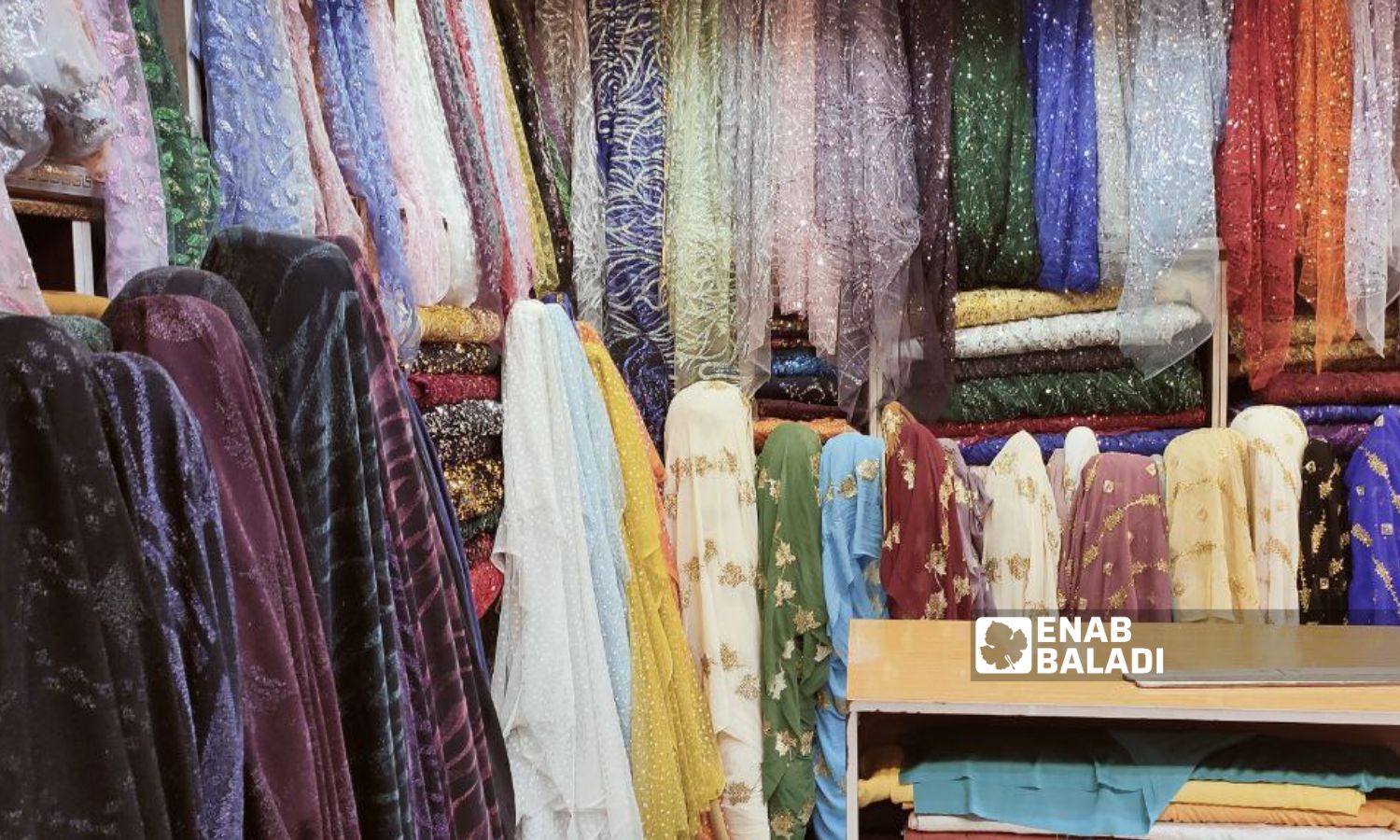



Al-Hasakah – Majd al-Salem
Al-Hasakah is considered one of the Syrian governorates whose women maintain the traditional Arab dress, as it is an integral part of the cultural heritage of the northeastern region.
With the advent of spring and the approach of Eid al-Fitr, many women and girls in al-Hasakah tend to buy traditional Arab clothes, especially in rural areas, in order to wear them during mutual visits between acquaintances and friends on Eid al-Fitr and other festivals and weddings.
Fadhila Mohamad, 55, does not consider her Arab dress to be merely an old tradition or folklore because she still maintains her Arab style of dress, which combines “decency and beauty with its distinctive decorations and embroideries” at all times and over the years, as she said.
The mother of five told Enab Baladi that she is keen to make her two girls wear traditional Arab clothes, especially on public social occasions, without finding it difficult to convince her daughters to wear this type of clothing.
The traditional dress is in line with the social requirements and norms of the countryside, which is predominantly tribal in nature, and the abundance of colors and decorations that the dress includes attracts younger girls to wear it, and the fabrics from which it is sewn are suitable for spring days when the weather is mild.
Haifa, 28, a teacher from the countryside of the city of al-Jawadiya in al-Hasakah governorate, told Enab Baladi that, in addition to her usual clothes that she wears while going to university, she has an Arab dress that she wears at village weddings or when going on special occasions, in which she sees “a special beauty and a creative touch.”
Tailoring the traditional Arab dress for women requires “special expertise and skill” and knowledge of all its details, a skill not possessed by all local tailors.
Hind Mohamad, 39, a tailor residing in Qamishli, told Enab Baladi that she has been tailoring Arab traditional clothes for women for about nine years and that there is an increasing demand for this type of dress these days by women of all ages, even by girls under the age of 20.
The Arab costume consists of a head covering, which is called by several names, including “al-Maqruna” or “al-Malfa” and al-Habriya (headband), which is usually woven from silk dyed in many colors.
The greater the length of the al-Habriyai, the more it indicates the social and material status of the woman among her peers, according to Mohamad.
The traditional costume also includes a long, loose dress, which has a wide sleeve opening at the wrist called “al-Roden” (the wide sleeve).
Then another garment called the “Alzboun” is worn over it. It is usually open from the front in a longitudinal manner, and it is woven from a lighter fabric than the main garment. It may be made of embroidered broadcloth, an indication of the woman’s high social status.
A woman, who is somewhat old, wears a belt around her waist called “al-Shuwaihi,” which is made of cotton or wool, and several “tassels” hang from it.
In addition to these basic pieces, the Arab costume contains many accessories such as anklets, the Kurdan (traditional necklace), and al-Arran (nose piercing), according to the seamstress.
Today, the design and stitching have changed from the old form of the costume.
The traditional belt is rarely worn with the Arab outfit, and the gold and silver ornaments that are known to be worn with the outfit no longer exist because they are very expensive, Mohamad says.
Tailoring a complete Arab costume suit requires about three and a half meters of fabric, and the cost ranges between 500,000 to 750,000 Syrian pounds ($70 to $100), according to the type of fabric used and the tailor’s wage.
The residents of al-Hasakah suffer from the high prices of clothes, as the price of pants has reached about 85,000 Syrian pounds, and the price of a shirt is about 90,000 pounds, while the price of a pair of shoes has reached about 80,000 pounds.
The prices of children’s clothes, which are in high demand with the approach of Eid, have also increased dramatically, making it difficult for residents to secure clothes for their children.
The high cost is linked to the suffocating economic crisis as a result of the long years of war and the sharp deterioration of the value of the Syrian pound, in addition to the high costs of land transportation and shipping. All prompted many residents to buy used clothes as an alternative to maintain the budget.
if you think the article contain wrong information or you have additional details Send Correction